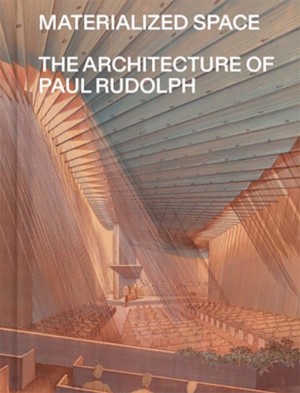By Abraham Thomas
Architect Paul Rudolph (1918–97) was known for his iconic modern houses and buildings in exposed concrete, including the Yale Art and Architecture Building and the Boston Government Service Center. Rudolph’s popularity peaked during the 1950s and ’60s, when he served as the chair of Yale University’s Department of Architecture, but his work fell from favour with the advent of postmodernism in the 1970s. Materialized Space: The Architecture of Paul Rudolph provides a long-overdue reassessment of the architect’s trailblazing career. Discussing the full range of Rudolph’s work, Abraham Thomas examines how Rudolph explored concepts such as functionalism, urbanism, and modular construction across decades and continents. Richly illustrated with photographs of the structures and Rudolph’s own drawings, as well as models, furniture, and period press clippings, this book sheds light on the architect’s process and takes up themes such as civic design, housing development, and experimental materials and methods—themes as important in his time as in our own.
New York, 2024, 27 x 21 cm, 218pp. illustrated, Paperback.
